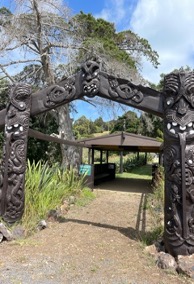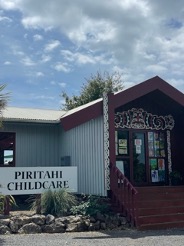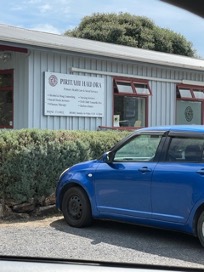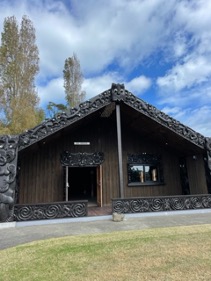Māori Mental Health: Current Challenges and Success Stories
By: Dr Hinemoa Elder
Te Aupōuri, Ngāti Kurī, Te Rarawa, Ngāpuhi nui tonu.
Consultant Child and Adolescent Psychiatrist. Starship Children’s Hopsital, Child and Family and Mother Baby Units, Auckland, New Zealand.
Chair IACAPAP Indigenous Working Group.
MBChB, FRANZCP, PhD, MNZM.
“Ki te kotahi te kākaho ke whati, ki te kāpuia, e kore e whati.”
When reeds stand alone they are breakable, when they stand together they remain strong. Kīngi Tāwhiao
My international colleagues often share their perceptions that Māori are fortunate to be from Aotearoa NZ, a progressive country for indigenous rights.
From the inside, our picture is not such a rosy one.
Approximately 800,000 of us live in Aotearoa NZ, where we are about 17% of the population, and an estimated 200,000 in Australia. Communities of Māori live in the UK, the US, across Asia, the Middle East and in Africa. Māori peoples can be found in all corners of the globe. We are descended from the great ocean going navigators of Te Moana Nui a Kiwa, the Pacific Ocean, so it is natural for us to travel.
At home in Aotearoa, we face the serious challenges of mental distress and disease. Our Māori youth male suicide rates are amongst the highest in the world, 32/100,000 reported in 2019, compared to the non-Māori rate of 14/100,000. We also have high proportions of our young people in youth justice, 64% of those charged in 2017 were Māori. We have robust evidence that different, discretionary decisions are made throughout the youth justice system, that favour non-Māori.
Approximately 70% of those in state care in 2019 were Māori. Again, we have good evidence that Māori children and whānau, extended families, are treated in racist ways by government care and protection services. We are also more likely to be suspended from school and we are more likely to experience barriers to accessing mental health services.
In 2019/2020, prior to COVID, approximately 319,000 children in our country were recorded as living in “after-housing-costs -income poverty”, which means they live at around 60% of the mean annual income. Approximately 160,000 of children live in extreme poverty, on the 40% or less of mean annual income measure. Around 1 in 5 of these children are Māori compared to 1 in 10 children overall, who live in poverty.
I am cautious in reporting these aspects of our mental ill health. We see evidence of victim blaming and racism when quoting the problems we face. This also contributes to our internalising the terrible state of our mental health and the intergenerational poverty many live with. This becomes part of our identity.
It’s a pretty bleak picture. How does a country with such good international PR have such abysmal indigenous mental health? One reason is we are not in charge of efforts to improve matters. Despite many of us trying to contribute to meaningful, sustained change over many years we have not made much progress to date.
Significant structural changes are pending in our health system, due to begin to formally take effect in July 2022. A unification of our District Health Board systems under one roof and the establishment of a National Māori Health Authority are in train. These are likely to lead to improvements in measurable ways eventually, but they are also likely to be slow in their effect on our peoples’ daily lives.
Alongside reporting the negative statistics it is important to emphasise the stories of our tamariki and whānau thriving and succeeding.
We have significant Māori cultural resources, which when utilised make a tangible difference. Our total immersion language education systems, which began to become established 40 years ago, are a prime example of this. Their impact from pre-school through to universities demonstrates the potency of reclaiming our language and culture. Health services contracts have been slower to implement such approaches. When culturally informed programmes are used, evaluation and research shows benefit. Unfortunately, these contracts are short term, often pilot programmes, and despite evidence of positive outcomes, when the contracts end that momentum is lost. Most commonly we are presented with ‘interventions’ developed in other countries. These are lost opportunities for strengthening our cultural identity which research and practice shows is protective for our wellbeing.
COVID has again exposed the levels of inequity and put further pressure on an already strained mental health system, as has happened around the world.
The NZ Māori Council was so concerned about the racist vaccine rollout in 2021 that they took the NZ government to the Waitangi Tribunal. A permanent commission of inquiry that makes recommendations based on claims brought by Māori relating to Crown actions which breach the responsibilities under Te Tiriti o Waitangi 1840. The Tribunal upheld the claim and made a series of recommendations to the NZ Government to rectify the situation. However, the vaccine roll out for Māori children aged 5-11 has seen the same lack of resources and cultural concerns. Leaving Māori children less likely to receive the COVID vaccine and more vulnerable to contracting the disease, with a well recognised higher level of comorbidity which makes the course of COVID more complex and dangerous. Importantly this has put additional strain on our tamariki, our children’s and whānau mental health.
Like the rest of the world, we have experienced the syndemic effect of COVID, which has un-masked the deeply entrenched inequities in our society, contributing to the burden of mental ill-health experienced by our young people. And while you might have the idea that Aotearoa NZ has been proactive in terms of indigenous rights and needs, in the context of the COVID pandemic there is evidence this has not been the case, despite clear imperatives and advocacy to do so.

Te tomokanga o Piritahi Marae. The entrance to Piritahi Marae. This is where you wait to be called on by the kaikaranga of the hau kainga, the home people.

Our puna reo, pre-school child care on the marae grounds.

Piritahi Hauora. Our primary health care services which include family doctors, nurses, social workers and counsellors.

The wharenui, the meeting house at our marae on Waiheke Island. “Kia piritahi” means “Be together”.

